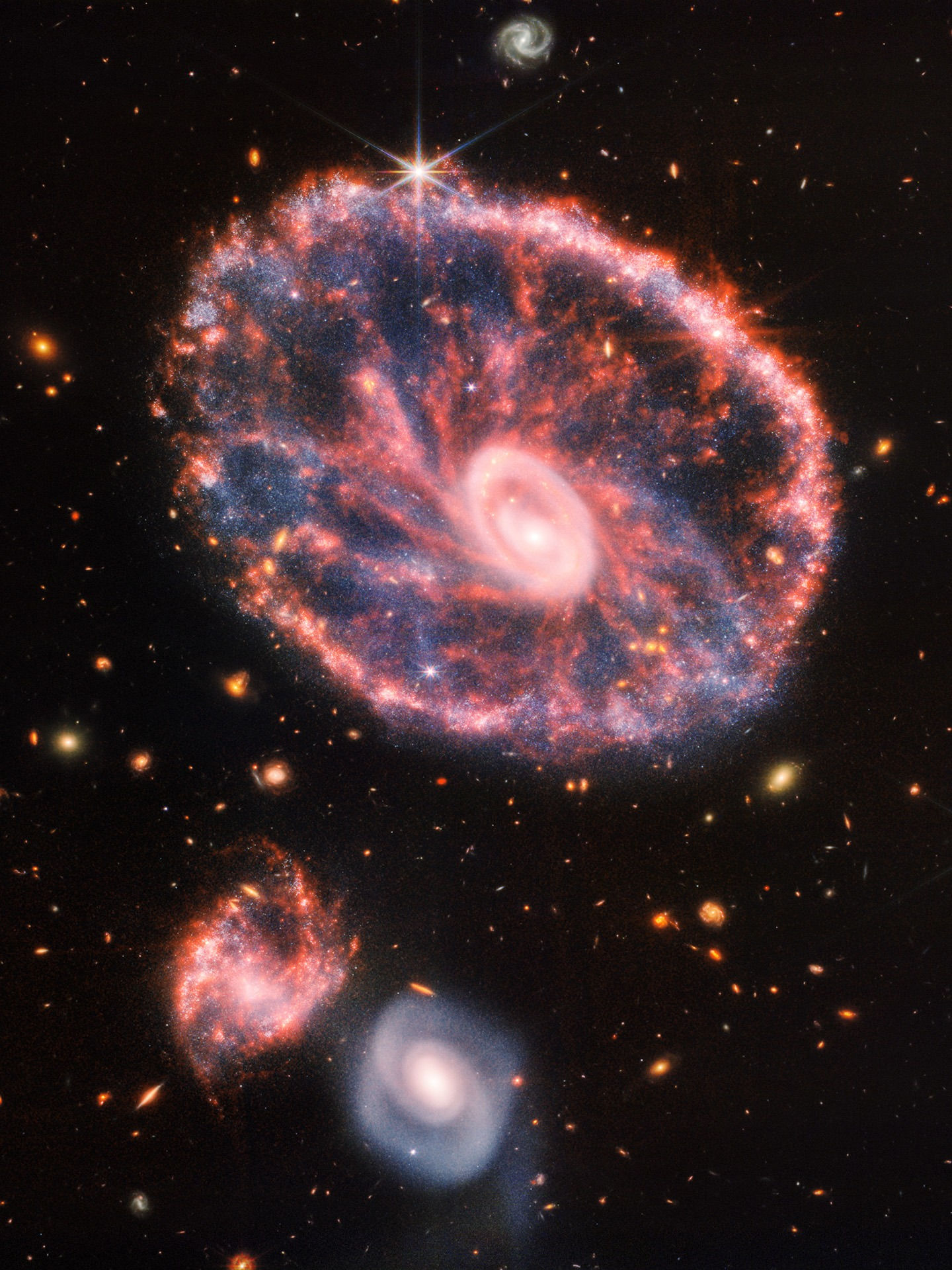Read this article to learn which is the most powerful and at the same time fastest rotating object in the observable Universe! (Spoiler alert: don't scroll down to the end of the article!)
First of all lets start with the planet Venus which has a rotation period of 243 days. Venus is the planet in our solar system with the slowest rotation. Jupiter on the other hand is not only the largest planet of our solar system, but also the one with the fastest rotation (1 rotation every 10 hours!). This might make us to think that the more massive objects somehow rotate faster. This is true, only as long as they are also more compact. The Sun for example rotates 1 time every 27 days. However, the solar core which is much more dense rotates one time every week. The density of the solar core is 150 g/cm^3, while the density of Jupiter is merely 1.33 g/cm³. However the solar core has a diameter of 200,000 miles versus 86,881 miles (Jupiter's diameter). Still this difference in size (at least in a first glance) does not look proportional to their rotational periods (1 week versus 10 hours), although it is certainly of similar order. Could the Sun's internal energy production slow down its rotational period? It certainly does, because otherwise the Sun would probably be a white dwarf rotating one time every few hours. However, the rotation of white dwarfs appears to be a complex phenomenon affected by multiple factors during the multiple stages of stellar evolution.
Kawaler (2003) mentions: " White dwarfs rotate. The angular momentum in single white dwarfs must originate early in the life of the star, but also must be modified (and perhaps severely modified) during the many stages of evolution between birth as a main– sequence star and final appearance as a white dwarf. Observational constraints on the rotation of single white dwarf stars come from traditional spectroscopy and from asteroseismology, with the latter providing hints of angular velocity with depth. Results of these observational determinations, that white dwarfs rotate with periods ranging from hours to days (or longer), tells us that the processes by which angular momentum is deposited and/or drained from the cores of AGB stars are complex. Still, one can place strong limits on these processes by considering relatively simple limiting cases for angular momentum evolution in prior stages, and on subsequent angular momentum evolution in the white dwarfs."
Indeed, the fastest known white dwarf has a rotational period of 25 sec, while others have rotational periods of days. However, if we could compress the Sun down to the size of a neutron star that is a pulsar, (this is impossible to happen since the mass of the Sun is too small- unless of course the Sun collides with an other Star- [very unlikely to happen] ), it will have a spin period 10 billion times smaller than the Sun. Pulsars can rotate several hundred times per second. If we go a step further and we compress a pulsar even more (a typical pulsar has the size of a town), we create a black hole.
Black holes are indeed the most powerful and the fastest rotating objects in the Universe that can rotate more than a 1000 times per second (reaching the theoretical limit of the speed of light). One might ask what will happen if we could add many supermassive black holes together, would they exceed the theoretical rotational limit? The answer is that they would reach it asymptotically i.e 99% the speed of light, 99.9%, 99.99%, 99.999% and it would require an infinite amount of energy or matter to be added into the black hole in order for its rotational speed to reach 100% the speed of light. Of course when we talk about black holes we might think of them as mathematical points (which is certainly unreasonable), however to be clear the rotational speeds mentioned above refer to a point on their even horizon, (the non physical surface beyond which nothing can escape from the gravity of a black hole not even light itself). Therefore, we have every reason to believe that if indeed black holes exist (i.e if the gravitational strength does not become weak enough on small scales under the theory of quantum gravity [or at least the theory of everything]) the rotational speeds on their physical surface will be even shorter than the rotation of their even even horizon, but in any case asymptotically they would reach the speed of light (i.e 99.99999% , 99.999999999% and so on).
It is worth mentioning here that in 1967 Werner Israel presented at King's College in London his "uniqueness theorem" according to which in the absence of angular momentum, gravitational collapse with sufficient mass will lead to a Schwarzschild black hole, irrespective of the shape of the collapsing star. A classical black hole can be described be only three parameters: Mass, Angular Momentum, Charge. A generic feature of rotating black hole solutions is that, for a given mass, their horizon radii are always less than their non-rotating counterparts. While the radius, of a non rotating black hole depends only on its mass, the radius of a rotating black hole depends also on its rotational speed. All stars, initially acquire their rotational speed from the slowly rotating nebula from which they are formed. In the absence of any intrinsic factors that can slow down the rotation (such as friction or nuclear fusion), the rotational speed of a star increases as it collapses since the gravitational potential energy decreases and the kinetic energy increases so that the total energy:
E= K+ U
remains constant. The Virial theorem states that:
2K+ U=0
Where K is the kinetic energy and U is the potential energy. However, since there is friction and hence as stars on the main sequence convert hydrogen into helium in their cores, the core contracts, the gravitational potential energy decreases and the thermal kinetic energy increases. This means that the core temperature increases (which means that its rotational speed probably does not increase in proportion to the lost gravitational potential energy). However, once the core becomes degenerate (a white dwarf or a neutron star) any further compression (i.e loss of gravitational potential energy) will perhaps lead to almost a pure conversion of gravitational potential energy to rotational kinetic energy. This explains why the core of the Sun, rotates slowly, while white dwarfs, neutron stars and black holes rotate much faster, even asymptotically close to the universal speed limit of the speed of light c.
The fastest rotating white dwarf that has been observed is LAMOST J0240+1952, rotating once every 25 seconds. This is a recent discovery and it was made by Dr Ingrid Pelisoli from the University of Warwick and colleagues astronomers after they noticed a burst of light from the white dwarf star, which is closely neighboured by a red dwarf star.

The newly discovered star, which is located in the Aries constellation, rotates fast because of a close neighbour red dwarf star which is feeding gas into LAMOST J0240+1952. Pelisoli and her team published their findings in a paper available on preprint server arXiv.
The fastest known rotating pulsar rotates 716 times every second and is PSR J1748−2446ad. It was discovered by Dr Hessels of McGill University on 2004 and is on the constellation of Sagittarius.
The fastest known black hole is a well known object: Cygnus X-1. Its rotational speed is close to the speed limit. It is a galactic X-ray source in the constellation Cygnus and it was the first candidate to be a black hole. Cygnus X-1 is close to a blue supergiant star and a stellar wind from the star provides material for an accretion disk around the X-ray source. It was discovered in 1964 during a rocket flight and is one of the strongest X-ray sources seen from Earth. This makes Cygnus X-1 the fastest known rotating object in the Universe!






























































































Comentários